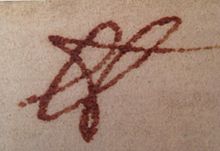Pounding the Hashtag
We all know the hashtag nowadays as the lingua franca of labelling content. Where did it come from though?

We all know the hashtag nowadays as the lingua franca of labelling content. Where did it come from though? Why is it referred to as the pound key when you're receiving the prime twentieth-century experience of being put through a crackly, automated phone system? Why do we also use it to designate a number?
The origin of the pound sign goes back to Roman times when libra pondo (℔) was used as a unit of measurement equivalent to about 328.9 grams[1]. Remember how the astrological libra (≏[2]) represents a scale[3]? Well, turns out they have the same root. It is unclear how the weight subsequently increased 40% to 453.592 grams, except that it had a time when the avoirdupois pound[4] was equivalent to 7,000 troy grains[5] Let's put it down to inflation.
It is less clear how the text also transformed into the symbol for the pound sterling (£), but it is presumably from the upper case Latin L[6]. At some point, it has an ancestor in the letter L in blackletter typeface (𝕷) which made its way to the symbol we know today.
You can see how the modern designation for pounds (lb), as a unit of measurement, has a predecessor in the libra pondo (℔). However, the origin of the hashtag sign took a slightly different route. To distinguish the Roman letters from the number 1, horizontal strokes were added. To write the script faster, it was simplified to the current combination of two horizontal strokes and two vertical strokes. From Isaac Newton's notebook, we can see a halfway point of its evolution below.

It was then included on a Blickensderfer model 5 typewriter, with a slight italicism still visible[7]. Its purpose in bookkeeping at the time led to it being called the number key[8]. Interestingly, at this point, there were already two pound signs on the typewriter.

From there on, its presence on typewriters carried it to a spot on keyboards, where it was utilised by programmers in early assembly language[9]. Presumably, it was then called hash as a reference to cross-hatching. When IRC (Internet Relay Chat) became a thing in the early days of the internet, the symbol was co-opted to label topics and groups. Then, Twitter in 2007 carried on the tradition[10], from which it has spread across social media.
To sum it all up, from its beginnings in Rome[11], the 5,076 grains in a single libra pondo spawned the £, the # and the lb. Neat, isn't it?
Zupko, Ronald Edward (1977). British weights & measures: a history from antiquity to the seventeenth century. University of Wisconsin Press. p. 7. ISBN 9780299073404. Retrieved 27 November 2011. ↩︎
This one's not exactly the correct symbol. The correct one is ♎︎, but it is quite ugly isn't it? ↩︎
Scales of Justice held by Themis, https://en.wikipedia.org/wiki/Libra_(astrology). ↩︎
The precursor to the modern pound. ↩︎
Yes, measured as 7,000 seeds of wheat or barley. ↩︎
Which seems to have disappeared off the Unicode font, unless the UTF-8 encoding of ꀀ is correct; https://www.compart.com/en/unicode/U+A7AD. Alternatively, my computer's font is not rendering it correctly. ↩︎
https://upload.wikimedia.org/wikipedia/commons/c/ce/Blickensderfer_No.5%2C_early_model%2C_1894.jpg. ↩︎
Crittendon, S. W. (1853). An Elementary Treatise on Book-keeping by Single and Double Entry. Philadelphia: E., C., & J. Biddle. p. 10. Retrieved 24 November 2015. ↩︎
"PDP-11 assembly language". Programmer209.wordpress.com. August 3, 2011. Retrieved August 25, 2014. ↩︎
"#OriginStory". Carnegie Mellon University. August 29, 2014. ↩︎
According to Wikipedia was primarily founded on the Hellenic system, which in turn was influenced by the Egyptian system and the Mesopotamian system. There's a big fat [citation needed] tacked onto that part of the article, although it's common sense that trading partners needed standards of measurement. https://en.wikipedia.org/wiki/Ancient_Roman_units_of_measurement. ↩︎



